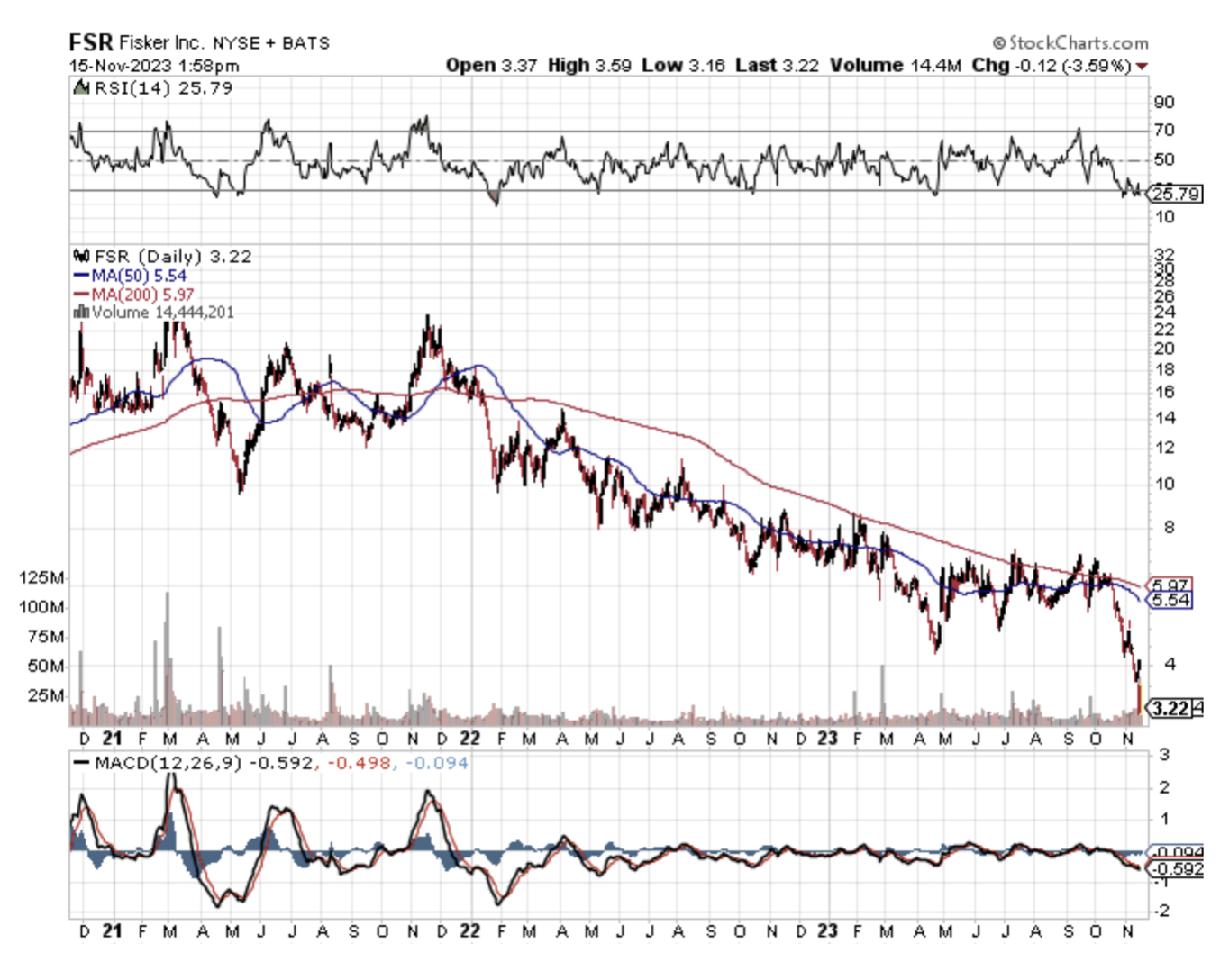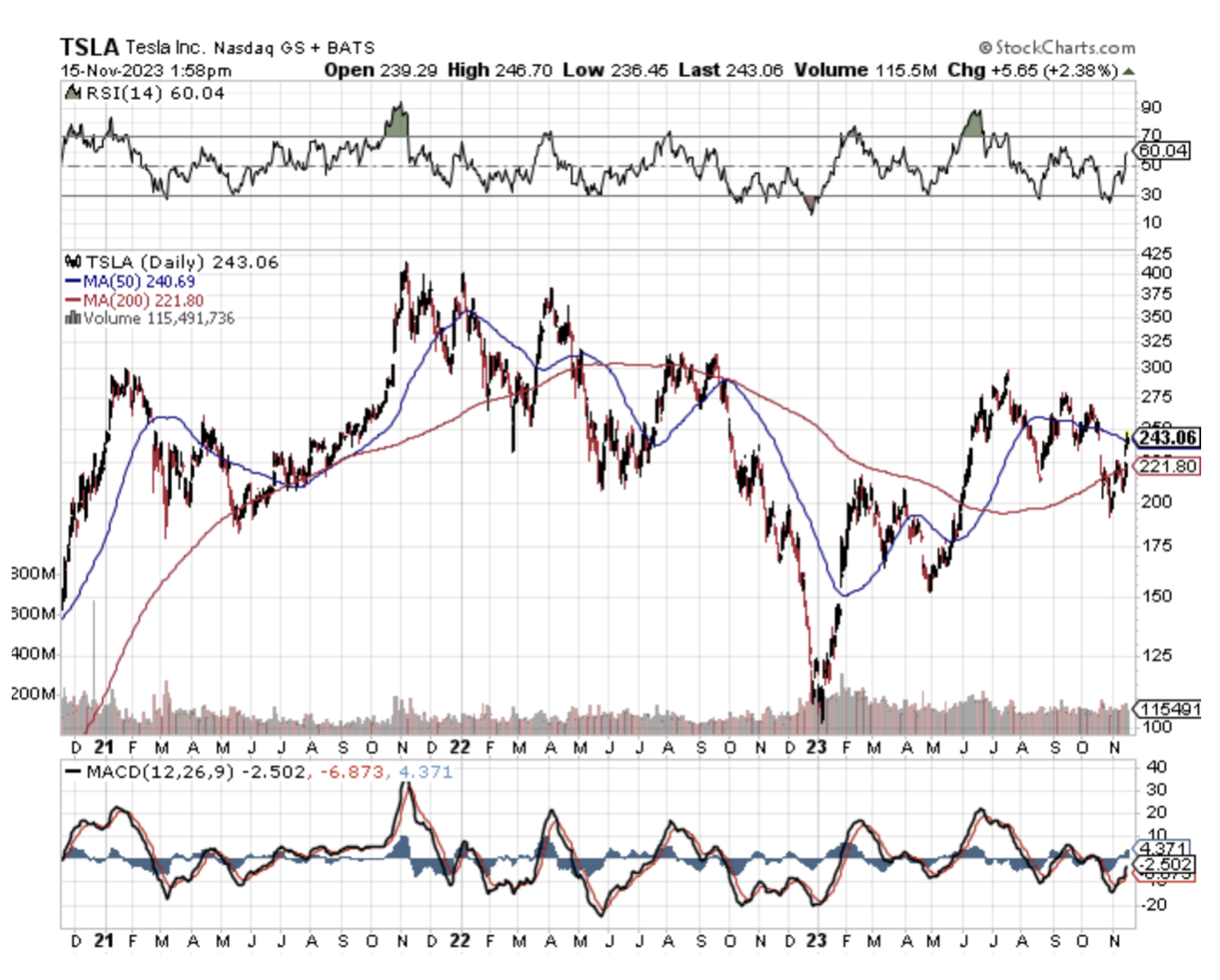Removing the Chief Accounting Officer and delaying earnings on the day of earnings is a massive red flag for EV start-up Fisker (FSR).
Fisker said in a filing that it “determined that it has material weaknesses in the company’s internal control over financial reporting.”
Hiring the wrong person for one of the most important jobs at the company only to realize on the day of an earnings report is more than bad optics, and it certainly means there is probably a lot worse going on under the hood.
The blood bath in FSR shares continues today with the stock cratering over 2% which is on the heels of a 21% drop on Tuesday.
Fisker CFO Geeta Gupta-Fisker said the company is cutting its 2023 production guidance to a range of 13,000-17,000 units to enable the company’s “global delivery and logistics platform to scale” and not sit on inventory. Fisker’s challenges with delivery resulted in 4,725 vehicles produced, but only 1,097 delivered.
FSR has continued to over-promise and deliver which creates a toxic recipe for lower stock prices.
After peaking at over $28 per share in the summer of 2021, the stock has done nothing but slide into the abyss.
CEO Henrik Fisker said customers were waiting a long time for their vehicles and were getting “annoyed.”
Fisker’s production forecast stood at 20,000-23,000 units, which itself was reduced from a prior forecast of 32,000-36,000 in May, and again from 42,400 earlier this year.
It’s only time until the EV company starts reducing its forecasts even more and this constant expectation of changing expectations is due to bad management.
FSR lost $91 million in the past quarter and only has a tick above half a billion in cash.
Doing some basic math, it means that FSR will burn through their existing cash in 5 quarters if they lose around the same amount of cash each quarter moving forward. If this happens, they will need to tap the corporate debt market and pay extortionate rates of something between 17% and 20% considering they have a high chance of filing for bankruptcy.
Readers should keep in mind that FSR doesn’t sell a cheap car.
It’s quite expensive which will make it even harder to scale.
That’s bad news for a start-up that only delivers about 1,000 cars per quarter.
Performance and management seem like they aren’t up to snuff and on paper, the company isn’t hitting the metrics it needs to be taken seriously by investors.
From a pricing point of view, Fisker made pricing adjustments for its lone Ocean SUV, cutting its top trim Ocean Extreme by $7,500 to $61,499.
Ultimately, I see FSR’s competitive position, or lack thereof exacerbating as we move forward.
I don’t see how they catch up with the heavyweights as it relates to many critical factors in running a successful EV firm.
Low-interest rates or something similar to them will not be back for a long time and perhaps never.
This new rate environment doesn’t favor the start-ups the ones that already “made it” in a low-rate environment of the past.
FSR makes a good car, but not to the point where buyers will pass up other cheaper options.
If FSR is struggling to deliver more than 1,000 cars per quarter, it bodes ill for repeat purchases after so many buyers are waiting for cars that should have already been delivered.
Management not understanding the logistics of the situation is hard to fathom in 2023.
They might want to pick up the phone and call around to see what is going on.
If a buyer spends more than $70,000 for an EV from an untested brand like FSR, better get the car there on time.
There is a reason why Tesla (TSLA) just caught a bid and shares went up 18% and the stock has doubled this year and it’s not because they have trouble delivering 1,000 cars.
I’ll take a hard pass on FSR for right now.






